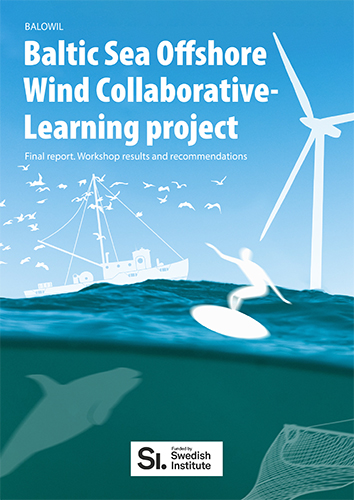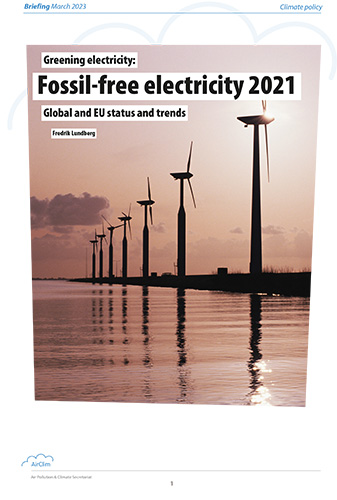
High benefits of ship fuel action
Implementing internationally agreed stricter ship fuel sulphur standards may save 26,000 lives per year and provide economic benefits to health worth up to 26 times the costs.
A recent study for the European Commission has examined the costs and benefits of implementing in European sea areas the new marine fuel and engine standards that were adopted by the International Maritime Organisation (IMO) in October 2008.
Emissions of air pollutants from shipping activities around Europe are high – in the year 2000 they were estimated to amount to around 2.1 million tonnes of sulphur dioxide (SO2), 3.4 million tonnes of nitrogen oxides (NOx), and 211,000 tonnes of fine particles (PM).
While pollutant emissions from landbased sources are gradually coming down, those from shipping show a continuous increase, and – in the absence of control action – by 2020 ship emissions of SO2 and NOx in European sea areas are expected to equal or even surpass the total from all land-based sources in the 27 EU member states combined.
In the study, a series of different scenarios for 2015 and 2020 are investigated and compared to a baseline scenario. The latter is a reference scenario which assumes a sulphur content of marine heavy fuel oil (HFO) of 2.70 per cent (the current world average for international shipping) in sea areas which are not designated sulphur emission control areas (SECAs). Inside SECAs, a fuel sulphur content of 1.45 per cent is assumed. Currently only two European sea areas – the Baltic Sea and the North Sea – are designated as SECAs. The baseline scenario does not include any policies or measures to reduce NOx emissions.
Compared to this baseline scenario, the following policy scenarios are investigated:
- Scenario 1: No additional SECAs beyond the existing Baltic Sea and North Sea (including the English Channel) designations.
- Scenario 2: Additional inclusion of the Mediterranean as a SECA.
- Scenario 3: Additional inclusion of the Black Sea as a SECA.
For all the policy scenarios investigated, a lowering of the fuel sulphur content to 0.10 per cent in SECAs by switching to low sulphur distillate oil is assumed.
As a consequence of this stricter SECA standard, the sulphur content in marine HFO used outside of SECAs without policy intervention is expected to increase from 2.70 to 2.94 per cent. This is reflected in the first three scenarios. For the 2020 scenarios only, two additional scenarios were modelled where the IMO's global sulphur limit of 0.50 per cent is implemented outside of SECAs.

Figure 1: Comparison of costs and benefits of applying the various scenarios to European sea areas, in billion euro. Scenario 1: Baltic and North Seas as SECAs. Scenario 3: Scenario 1 plus Mediterranean and Black Seas as SECAs. Scenario 4: Scenario 1 plus 0.5% S outside SECAs. Scenario 5: Scenario 3 plus 0.5% S outside SECAs.
All scenarios (except the baseline) include implementation of the global NOx-emissions standards (Tier I and Tier II) to all new ships, in accordance with IMO's MARPOL Annex VI. Moreover, the study makes the rather brave assumption that the Baltic Sea, the North Sea and the Mediterranean will be designated as emission control areas for NOx (NECAs). This means that from 2016 all new ships in these three areas are assumed to comply with the IMO's Tier III standards, implying an 80 per cent reduction in NOx emissions as compared to the Tier II standards.
It should be noted that none of the scenarios assume the Northeast Atlantic (i.e. the sea area from Gibraltar up to western France and southern England) will be designated as a SECA or a NECA.
Figure 2 shows estimated changes in emissions of SO2, NOx and PM2.5 for some of the scenarios, as compared to the baseline level of emissions.

Figure 2: Emissions of SO2, NOx and PM in 2000, 2015 and 2020 from international shipping around Europe in selected scenarios, in kilotonnes. Scenario 1: Baltic and North Seas as SECAs. Scenario 2: Scenario 1 plus Mediterranean as a SECA. Scenario 5: Baltic, North and Mediterranean Seas as SECAs plus 0.5% S outside SECAs.
Computer modelling was used to estimate environmental outcomes in terms of depositions and concentrations of air pollutants. Most scenarios show significant reductions in exceedance of the critical loads for acidification, especially in the coastal areas of the Baltic Sea and the North Sea. As a result of the NOx abatement measures, exceedance of the critical loads for eutrophication is also lowered, by up to 20 per cent in coastal areas of the Mediterranean.
Cutting ship emissions will improve air quality, and the resulting reduced concentrations of fine particles (PM2.5) is estimated to avoid between 16,000 and 26,000 annual premature deaths in 2020. Better air quality will also result in less respiratory and cardiac hospital admissions, amongst other benefits.
The economic benefits of the various scenarios are calculated from the quantified health benefits only – environmental improvements are not monetised. As shown in Figure 1, low and high benefit estimates are given, reflecting different methods of valuing human life.
When estimating the emission abatement costs, low and high estimates are also used. The lower bound of costs is based on ships fitting exhaust cleaning techniques (scrubbers) to reduce SO2 emissions, while the upper bound assumes a fuel shift from high-sulphur HFO to lower-sulphur distillates.
In all scenarios investigated the benefits exceeded the costs, even when comparing the lower bound for benefits with the higher bound for costs (see Figure 1). When additional analysis was done to assess further uncertainties, it was found that the probability of benefits exceeding costs is either "very likely" or "virtually certain". According to the authors, it is therefore a robust conclusion that the benefits of the measures investigated will exceed the costs.
Christer Ågren
Report: Cost benefit analysis to support the impact assessment accompanying the revision of Directive 1999/32/EC on the sulphur content of certain liquid fuels. Final report to the European Commission, 23 December 2009. By AEA Technology, UK.

 Download this issue
Download this issue










